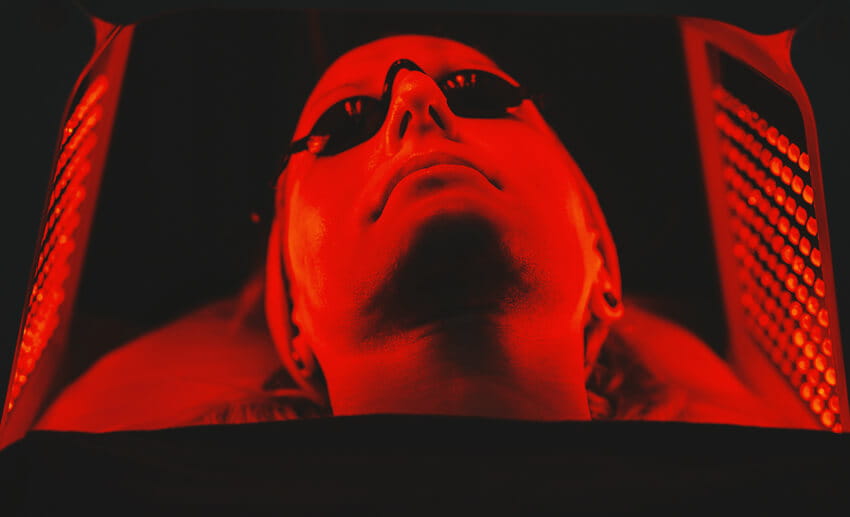What is red light therapy? Benefits and side effects

MRIs, genetic testing, surgical robots — there are plenty of aspects of medicine that seem like they're straight from the future. But the reality is that there have been incredible advancements in healthcare research, and it benefits us in so many ways.
Red light therapy is another part of healthcare that also feels futuristic. However, it's actually a proven "pod" technology that leverages therapies of the past (like lasers and light therapy) and joins them in an easy, seamless treatment. You can also buy smaller scale red light therapy devices to use right at home.
One of the primary benefits of red light therapy is to treat chronic (ongoing) inflammation, which eases pain in joints and muscles. Here are some benefits of red light therapy and what you can expect with this treatment.
"Chronic pain management often involves a complex blend of therapies. Red light therapy can be an incredible adjunct therapy that complements traditional treatments,” says Soorena Khojasteh, MD, system chief of pain medicine at Lankenau Medical Center. "What's more, with whole-body red light therapy, you might even treat other sources of pain you weren't focusing on."
What is red light therapy?
Pain relief without medicine or surgery might sound too good to be true, but red light therapy offers exactly that.
Red light therapy uses photobiomodulation, which is a low-level laser therapy that delivers red and near-infrared light to areas of your body. In doing this, it helps regenerate (or grow back) cells, restore cell function and trigger blood flow. In turn, this helps to heal and relieve pain.
Photobiomodulation was discovered about half a century ago. Now, it's used to treat all kinds of ailments, sometimes multiple at the same time. It relaxes muscles, which relieves muscle spasms, pain and stiffness. It has a similar effect on joints, including relieving aches, pains and stiffness.
Benefits of red light therapy
From major league baseball teams to elite athletes, red light therapy has become commonplace in healing for athletes. However, it has benefits far beyond the court, pool and track.
Its major benefits include improving joint mobility and easing muscle pain. More specifically, red light therapy helps with:
- Arthritis pain
- Joint pain
- Muscle pain, including healing muscle injuries and reducing soreness after exercise
- Tendon pain, such as from Achilles tendonitis
"Some people also experience additional advantages, including improved sleep, less stress, reduced anxiety and relief from depression," says Dr. Khojasteh.
With whole-body red light therapy, your entire body reaps the benefits of this treatment. This means if you have multiple conditions, such as arthritis and muscle pain, you can treat them at the same time. However, you can also use this therapy to treat targeted areas of your body.
Are there side effects of red light therapy?
Red light therapy is considered a safe treatment when administered by a trained medical professional. By determining the appropriate dosage for your needs, they can ensure your condition is treated without any negative side effects.
However, if you have certain conditions, such as skin sensitivity or if you are pregnant, your provider may recommend avoiding red light therapy.
The future of red light therapy
Red light therapy might already seem futuristic, but there may be even more benefits down the line. Healthcare researchers are continuing to find new benefits in this simple but effective treatment for pain and other ailments.
For now, you can take advantage of its current benefits to your muscles and joints. Whether you have one issue to address or many, red light therapy can provide the relief you need. Just make sure you talk with your primary care doctor before using any at-home devices as treatment.
Next steps:
Make an appointment with Soorena Khojasteh, MD
Read about how light therapy can treat seasonal depression
Subscribe to the Well Ahead Newsletter
 Content you want, delivered to your inbox
Content you want, delivered to your inbox
Want to get the latest health and wellness articles delivered right to your inbox?
Subscribe to the Well Ahead Newsletter.
